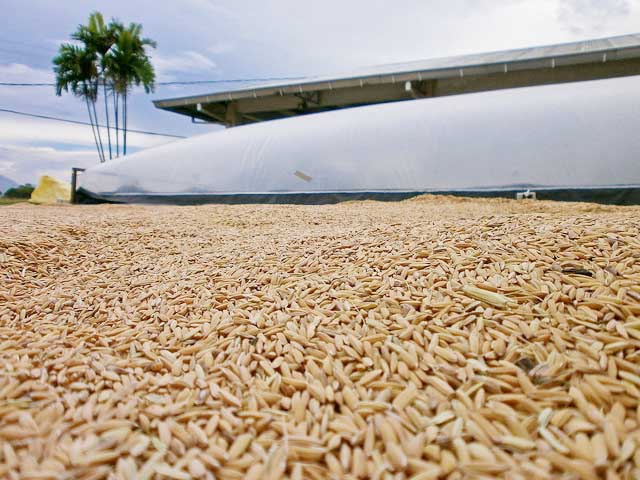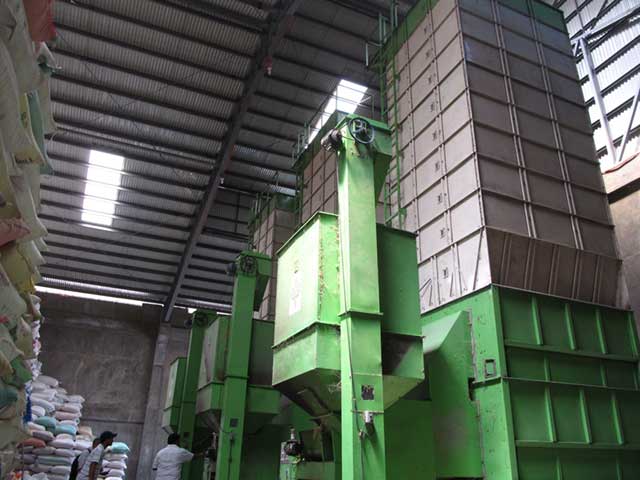Drying basics
 Drying of grain involves exposing grain to ambient air with low relative humidity or to heated air. This will evaporate the moisture from the grain and then the drying air will remove the moisture from the grain bulk.
Drying of grain involves exposing grain to ambient air with low relative humidity or to heated air. This will evaporate the moisture from the grain and then the drying air will remove the moisture from the grain bulk.
Since drying practices can have a big impact on grain quality or seed quality, it is important to understand some fundamentals of grain drying.
Grain and air properties
Rice is a hygroscopic material.
- When dry rice is exposed to air with high relative humidity (RH) the rice grains will absorb water from the air (re-wetting).
- When wet rice is exposed to air with low RH the rice grains will release water to the air (drying).
The equilibrium moisture content (EMC) is the final moisture content of the grain or seed after being stored for some time with surrounding air of a certain temperature and RH.
During storage, the final moisture content of grain will be determined by the temperature and RH of the air that has surrounds the grain. If the grain is not protected against the humidity in the air, particularly during the rainy season when the RH is very high, the grain moisture content will rise and this will lead to deterioration in both grain and seed quality.
Drying process
 Drying practices can have a big impact on grain or seed quality. Drying of grain involves exposing grain to air with low relative humidity which will lead to evaporation of the moisture in the grain and then the moisture’s removal away from the grain.
Drying practices can have a big impact on grain or seed quality. Drying of grain involves exposing grain to air with low relative humidity which will lead to evaporation of the moisture in the grain and then the moisture’s removal away from the grain.
The process includes:
- moisture removal
- monitoring drying periods (pre-heating, constant rate, falling rate)
- increasing drying rate at 18% MC
- uniform drying
- tempering










